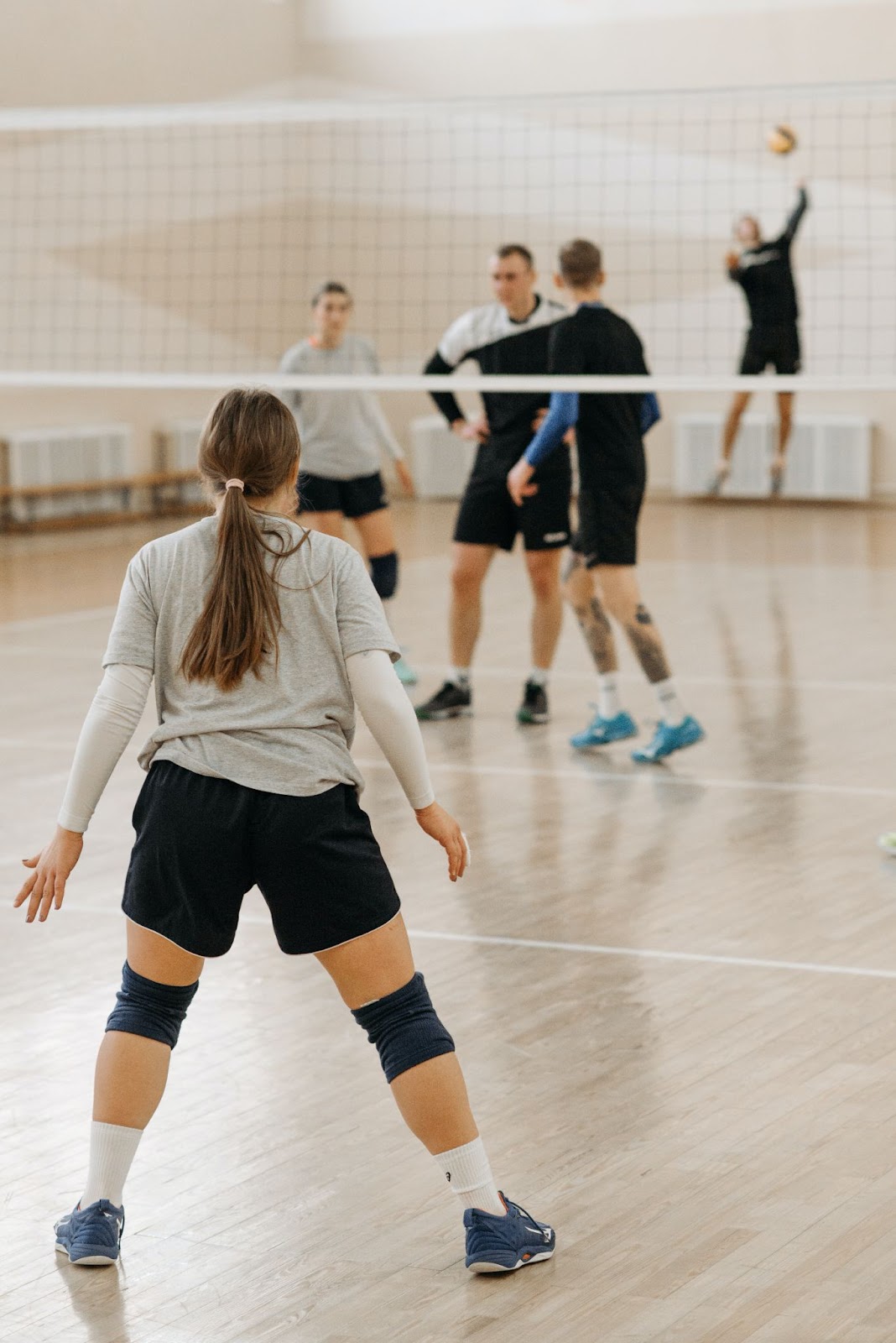
Whether you're a drop-in volleyball enthusiast or an avid recreational volleyball player, you know that a strong defence is crucial to winning the game. A well-executed defensive strategy can turn the tide of a match and keep your opponents on their toes. In this blog post, we'll delve deeper into some of the best volleyball strategies for defence!
1. Positioning is Key
One of the most fundamental aspects of a strong volleyball defence is proper positioning. Players should be ready to move in any direction and should position themselves based on where the ball is on the opponent's side. For example, if the ball is on the left side of the court, the left-back player should move towards the sideline, ready to dig a line shot, while the right-back player should move towards the middle, ready to dig a cross-court shot.
Understanding the importance of positioning and implementing it in your game can significantly improve your team's defensive capabilities. It's not just about reacting to the ball; it's about anticipating where the ball is going to be and positioning yourself accordingly.
2. Communication
Communication is crucial in volleyball defence. Players need to constantly talk to each other, calling out who has the ball, where the hitters are, and who's going to dig the ball. This constant communication helps prevent confusion and ensures that every player knows their role in each play.
Good communication can be the difference between a successful dig and a missed opportunity. It helps coordinate team movements, reduces errors caused by misunderstanding, and creates a more cohesive and effective defensive unit.

3. Read the Hitter
A good defensive player can read the opposing team's hitters and anticipate where they're going to hit the ball. This involves watching the hitter's approach, arm swing, and body position. For example, if a hitter's shoulders are angled towards the line, they're likely going to hit a line shot. By reading the hitters, players can position themselves in the right place at the right time to dig the ball.
Reading hitters is a skill that comes with experience and observation. The more you play and watch volleyball, the better you'll become at anticipating hitters' actions. This skill can significantly improve your defensive capabilities and give your team an edge in matches.
4. Block Coverage
Block coverage is a crucial part of volleyball defence. When one of your teammates goes up to block a hit, the rest of the team should be ready to cover any balls that get deflected off the block. This involves quick reactions and good positioning. Players should be low and ready to move, with their eyes on the block.
Effective block coverage can prevent easy points for the opposing team and create opportunities for your team to transition to offence. It requires teamwork, quick reactions, and a good understanding of the game.

5. Digging Deep
When digging a hard-driven ball, it can be a good idea to aim deep into the opponent's court. This gives your team more time to transition from defence to offence and can catch the opposing team off guard. Plus, deep digs are more difficult to pass, potentially leading to an easy point for your team.
Digging deep is a strategy that can disrupt the opposing team's rhythm and create scoring opportunities for your team. It's a skill that requires good control and precision, but with practice, it can become a valuable part of your defensive arsenal.
6. Serve and Receive Formations
The way your team lines up to receive the serve can have a big impact on your defensive success. There are several different serve-receive formations, including the W formation, the U formation, and the 3-man formation. The best formation for your team depends on your players' strengths and the serving tendencies of the opposing team.
Understanding and implementing effective serve-receive formations can set your team up for success from the very first touch of the ball. It's a strategic aspect of volleyball defence that requires planning, communication, and adaptability.
7. Defensive Transitions
Defensive transitions—moving from offence to defence and vice versa—are a crucial part of volleyball. Players need to be able to quickly switch roles, moving from their attacking positions to their defensive positions as soon as the ball is hit by the opposing team. This requires quick thinking, good communication, and a thorough understanding of the game.
Effective defensive transitions can keep your team prepared and organized, reducing the chances of being caught off guard by the opposing team's attacks. It's a dynamic aspect of volleyball defence that adds depth and complexity to the game.

Whether you're playing drop-in volleyball or participating in a recreational league, these defensive strategies can help you improve your game and enjoy the sport even more. Remember, a good defence is often the best offence, so take the time to practice these strategies and watch your game improve. Happy playing, and see you on the court!